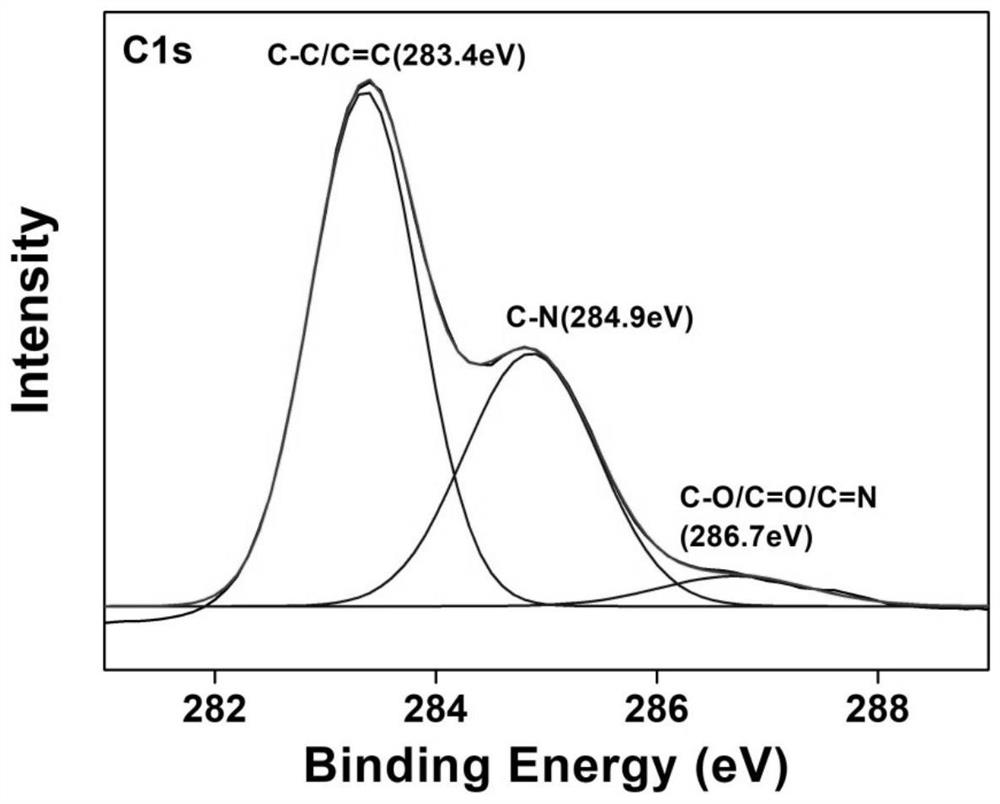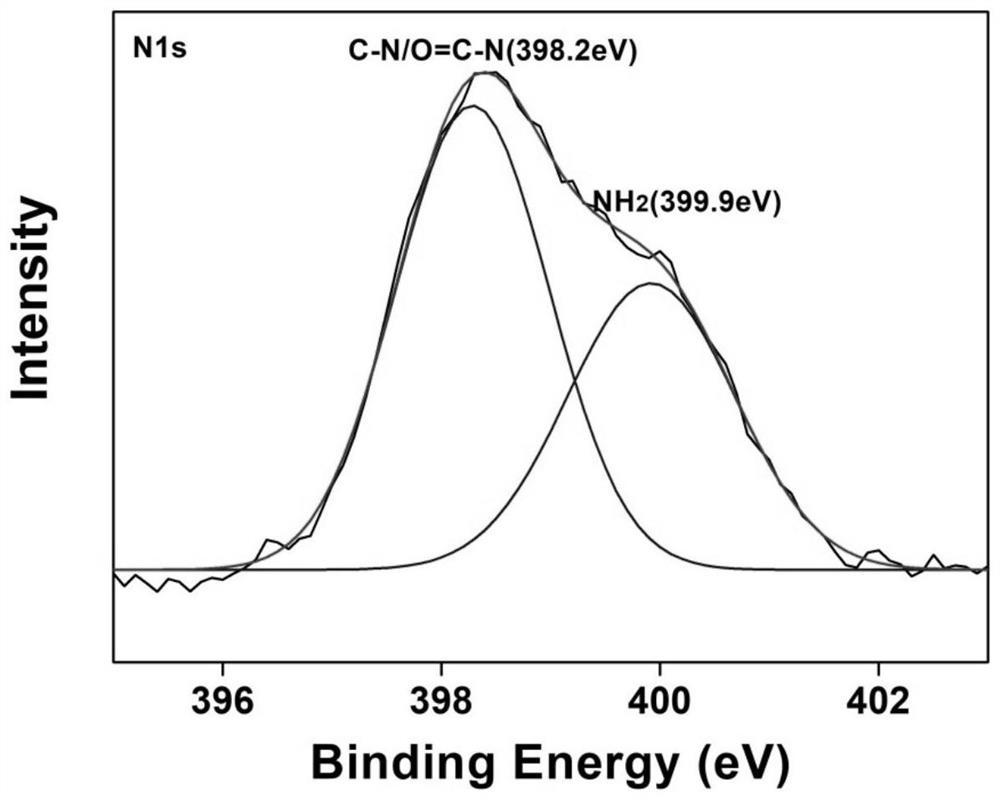Reagent for accelerating Fenton reaction as well as preparation method and application thereof
A technology of Fenton reaction and Fenton reagent, which is applied in the field of reagents for accelerating Fenton reaction and its preparation, can solve the problems of unsatisfactory catalyst activity, stability, acceleration rate, narrow solution pH range, and large input amount, and achieve Good biological safety, stable product quality, and the effect of reducing economic costs
- Summary
- Abstract
- Description
- Claims
- Application Information
AI Technical Summary
Problems solved by technology
Method used
Image
Examples
Embodiment 1
[0041] A reagent for accelerating the Fenton reaction, the reagent for accelerating the Fenton reaction is copper carbon dot CuCD.
[0042] The preparation method comprises the following steps:
[0043] Step S1. Place 3,4-dihydroxyphenylpropionic acid (DHCA) and copper chloride in a beaker, dissolve with deionized water, stir for 5 minutes, add 2,2'-(ethylenedioxy)diethylamine (EDA ), stirred for 5min.
[0044] Step S2. Transfer the solution into a polytetrafluoroethylene-lined autoclave, place it in a muffle furnace at 180° C. for 5 h, and cool to room temperature.
[0045] Step S3. The solution is centrifuged, passed through a 0.22 μm water phase filter membrane, repeated three times, and the filtrate is loaded into a dialysis bag (molecular weight cut-off 500D) and dialyzed for 3 days, and deionized water is changed every 12 hours, and freeze-dried to obtain copper carbon dots (CuCD) .
[0046] Such as Figure 1-Figure 5 As shown, copper carbon dots (CuCD) mainly contai...
Embodiment 2
[0048] Example 2 Copper carbon dot CuCD is applied to degrade rhodamine B
[0049] The copper carbon dot CuCD prepared in Example 1 was prepared into a 10 mg / mL CuCD solution. Prepare 0.01mol / L FeSO 4 solution, 1% H 2 o 2 (volume ratio) solution and 1mg / mL RhB solution, add 2.2mL deionized water, 1.5mL H 2 o 2 , 200uL FeSO 4 Solution, 20uL CuCD solution and 80uL RhB were reacted at 40°C, and the absorbance of the solution was measured regularly.
Embodiment 3
[0056] Example 3 Comparison of copper carbon dot CuCD degradation of rhodamine B at different temperatures
[0057] The copper carbon dot CuCD prepared in Example 1 was prepared into a 10 mg / mL CuCD solution. Prepare 0.01mol / L FeSO 4 solution, 1% H 2 o 2 (volume ratio) solution and 1mg / mL RhB solution, add 2.2mL deionized water, 1.5mL H 2 o 2 solution, 200uL FeSO 4 solution, 20uL CuCD solution and 80uL RhB, put the test tubes at different temperatures (25°C, 30°C, 40°C, 50°C, 60°C, 70°C, 80°C) for 5 minutes, measure the absorbance of the solution, and calculate the RhB The degradation rate, see the results Figure 8 .
[0058] From Figure 8 It can be seen that as the temperature increases, the degradation rate of RhB gradually increases. At 80°C, the degradation rate can approach 100% after 5 minutes of reaction, which has a relatively high degradation rate and degradation rate.
PUM
| Property | Measurement | Unit |
|---|---|---|
| size | aaaaa | aaaaa |
Abstract
Description
Claims
Application Information
 Login to View More
Login to View More - R&D
- Intellectual Property
- Life Sciences
- Materials
- Tech Scout
- Unparalleled Data Quality
- Higher Quality Content
- 60% Fewer Hallucinations
Browse by: Latest US Patents, China's latest patents, Technical Efficacy Thesaurus, Application Domain, Technology Topic, Popular Technical Reports.
© 2025 PatSnap. All rights reserved.Legal|Privacy policy|Modern Slavery Act Transparency Statement|Sitemap|About US| Contact US: help@patsnap.com



